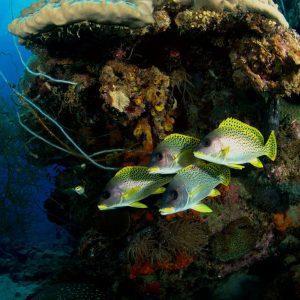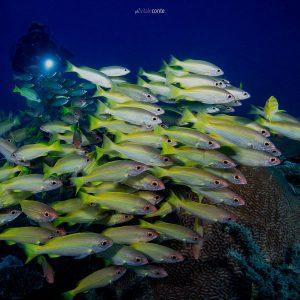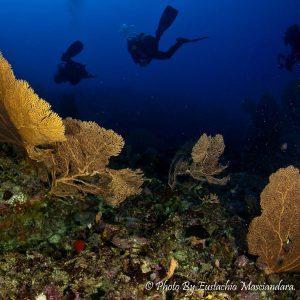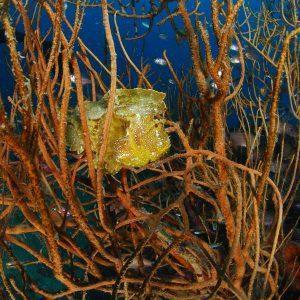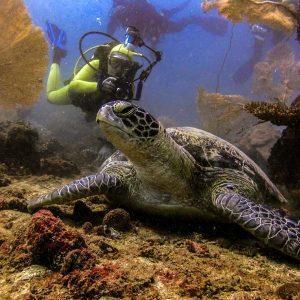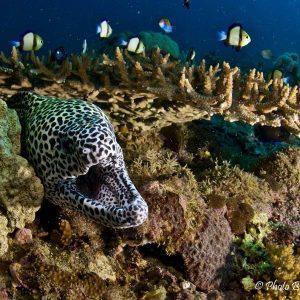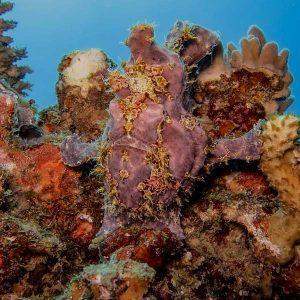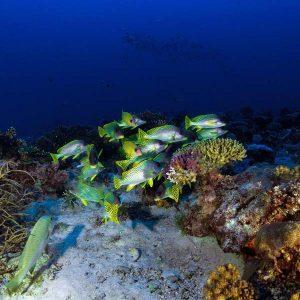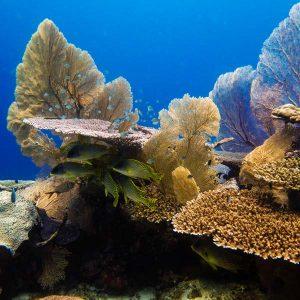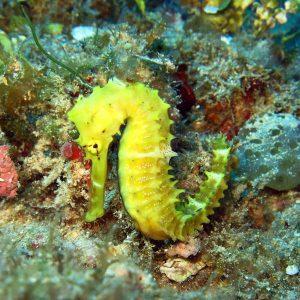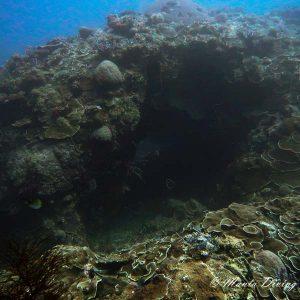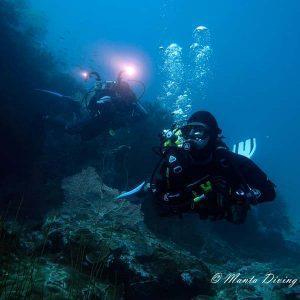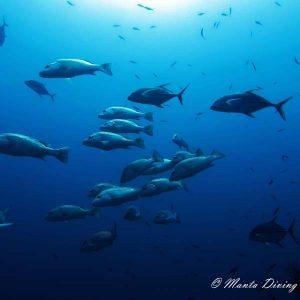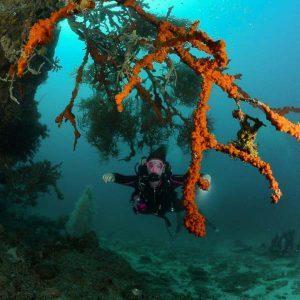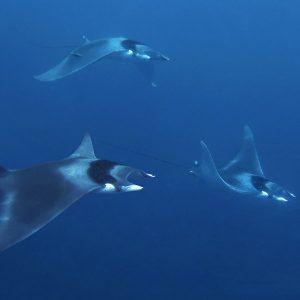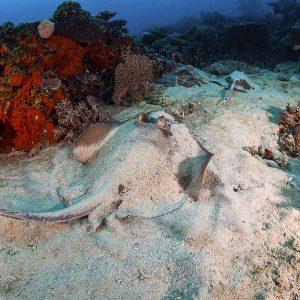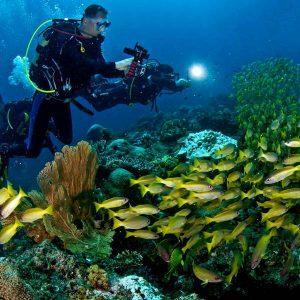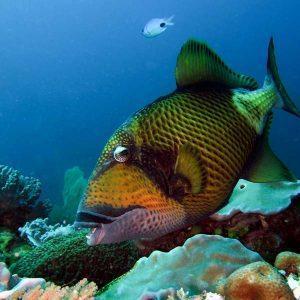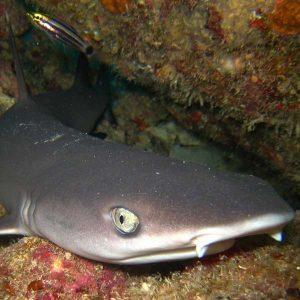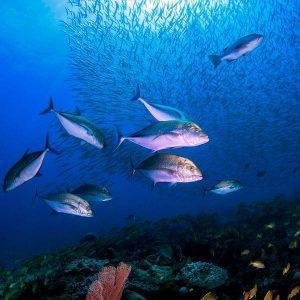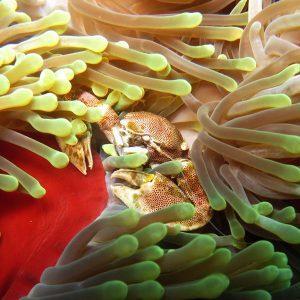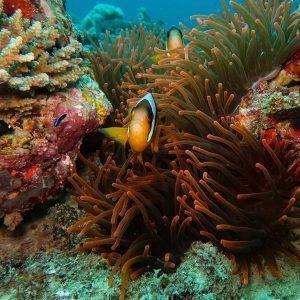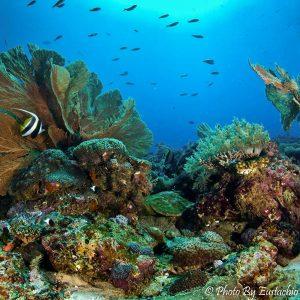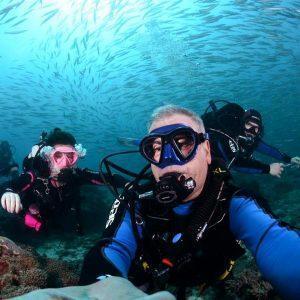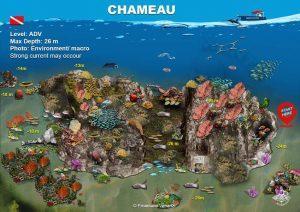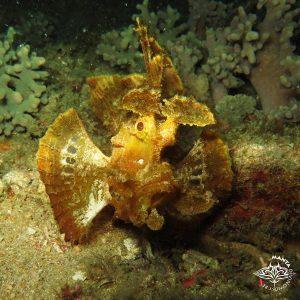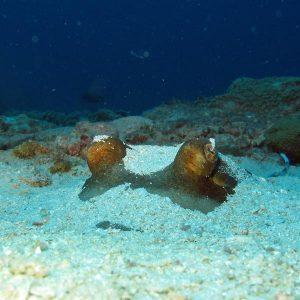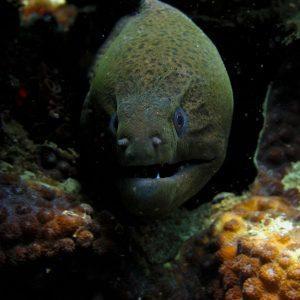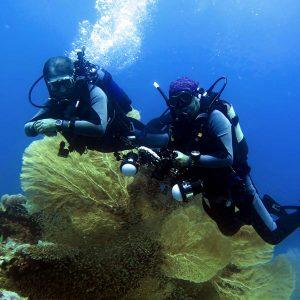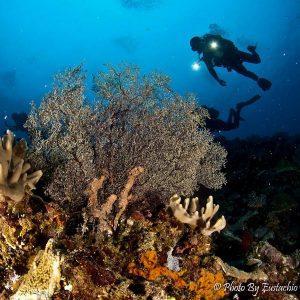
These dives are the perfect occasion to become familiar with the ocean. They are excellent in some cases both as first and second dive of the morning; some of them are considered to be the most exciting of Nosy Be, that’s why divers often ask us to repeat them. There are gorgonians, wrecks, submerged reefs and you can dive at not demanding depths.
All the fish often gather in shoals to cope with predator attacks such as amberjack, jackfish and barracudas. Large green turtles, the Chelonya midas, can be found while having a nap with their shell stuck under a recess to avoid floating towards the surface. You can take pictures of subjects for macro photo and environment photo.
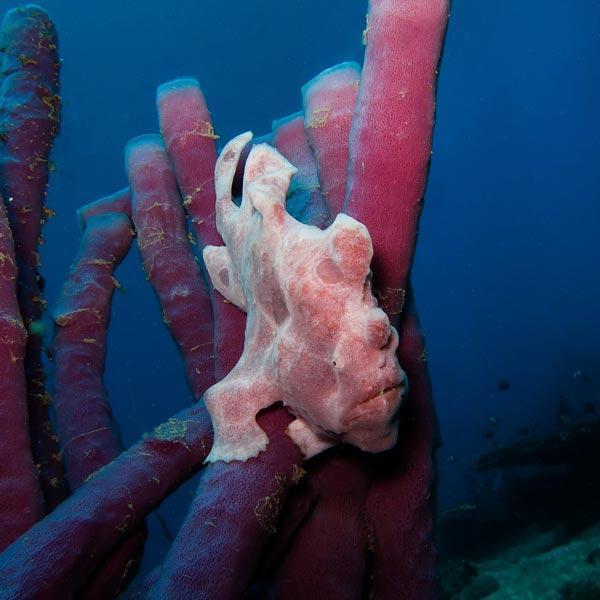

At least at 14 meters and descending with a small inclination to 24 meters at max, there is a mass of giant pink gorgonias: the Melithea.
Swimming here and there among these great gorgonians and various coral conformations, we can meet remarkable lobsters, especially at night, captain fish, clouds of grunting fish and large cup sponges. On the gorgonians tips or on whip corals you can find a multitude of colourful crinoids covered with parasites perfectly camouflaged in the feathered arms as two small violet eyes peep out from the anchoring part of the organism.
Two super green turtles (Chelonia mydas) chose this site as their home. You can also see nudibranchs of every size and color, flatworms and crabs. A complete catalogue for macro photo is there for divers fond of photography. When visibility is good or just by tilting camera flashes to avoid the snow effect, you can take good photos of the environment.
The close distance to the coast and the organic nourishment that is concentrated in this area makes the waters sometimes greenish and give this dive a mysterious and fascinating aspect. This site is perfect for night explorations.
Livello: Open Water Diver
Photography: Environment and macro

A magnificent coral garden covered with soft, branched and massive corals, like pink alchemis, purple madrepora, minor star, and the flashing xenia umbrella, host a world of micro life. Shoals of unicorn fish swim in the current that sometimes can carry divers transversely among anemones. It starts from about 15/20 meters depending on the current and you never exceed a depth of about 23 meters. Here you can also find impressive acroporas in the recesses. This dive is perfect for divers who are fond of corals and for researchers; it is also close to the coast and it is visited by whale sharks.
Livello: Open Water Diver
Photography: Environment and macro

You can reach its bottom at about 26 meters; on a sandy plateau, detached from the wall separating from the highest area of Sakatia, there are three coral conformations. Two of them are connected to each other through a saddle of lettuce coral
There are splits and passages with some Antipathes at the exit. Here you can see sweetlips, tropical groupers, glass fish, dentees and crocodile fish. Sometimes some lucky divers may meet generous stingrays. During this dive, you can see lot of hard corals and alkionaceous. Diving up the plateau you can meet puffers, porcupine fish, eels and fans of gorgonians.
Livello: Adavanced
Photography: Environment and macro

About 5 miles from the coast, there is a coffee bean-shaped plateau divided in two by a strip of debris. The depth varies between 15 meters on the plateau, down to 32 meters on the neighbouring areas.
According to the route you choose, you can see clown fish, many lutianidae and “clouds of fusiliers” after which the site was named. As soon as we begin our dive some unicorn fish and blue triggerfish accompany us to a small wall opposite a reef full of small pinnacles and gorgonians.
Hidden beneath some gigantic holothurians there are orbicularis crabs, emperor shrimps and ghost shrimps nearby or inside Plerogiyra corals. Isn’t uncommon to see leopard moray eels and small white tip sharks. Swimming into the blue, past the coral barrier that borders a sandy plateau, if you are fond of photography and video shooting you will certainly spot big bluefins carangidae just waiting to go hunting. The dive generally finishes in the blue, always wrapped in clouds of fish. This is a sort of “utility dive” since it assures fish in abundance whatever type of current you go diving.
Livello: Open Water Diver in low tide, Advanced in high tide.
Photography: Environment and macro

It is a shoal formed by two large humps, Chameau, the camel. Depth from 16mt from 26m. Once on the first hat, you can immediately notice the biodiversity: nudibranchs scattered here and there waiting for a flash to show their colors, as small blue triggerfish will accompany us on the bottom.
Zigzagging among corals and gorgonians, according to the tide, you can meet dentexes being cuddled by the tide,and glass fish surrounding gorgonians. On the saddle we can find a coral conformation where a school of sweet lips hides in a recess.
On the second hump (about 17 meters), a beautiful red anemone (quite rare in our area) will show us the dance of the two clown fish living there. It is not difficult to meet quite big groupers and leopard moray eels, as well as tropical corbs and fusiliers. A large Haddon anemone hosts porcelain crabs as they taste some microorganisms using their claws.
Sometimes you can meet a big Napoleon fish wandering over the reef while a white tip shark patrols the area in search of food. This is a recommended site to go diving in descending tide, since it will push us transversely towards the final part of the dive at about 13 meters. Here other reef fish like unicorn fish and surgeonfish are a wonderful show.
Livello: Open Water Diver in low tide, Advanced in high tide.
Photography: Environment and macro

This dive is a guarantee: it never disappoints divers and it is quite easy. Its name means snail. This dive is intuitive and you can easily understand its trend. Sometimes, in order to avoid ending the exploration in a short time, you have to swim zigzagging between the two reefs delimiting the sides of this splendid shoal.
The depth is not challenging at all, in fact you reach a maximum depth of 22 meters and in most cases, as we usually recommend for every dive sites, the free descent into the blue will allow you to break through the walls of fish in front of us.
On the bottom the reef is very lively colored in the areas of delimitation of the hat, while in the middle, the plateau hosts some coral conformations and some gorgonians. A stretch where anemones cover a large area will give us the chance to discover some nice treasures. This reef is basically populated by shoals of unicorn fish, fulvous and yellow lutianidae, hunting carangidae fusiliers and small barracudas, as macro striped sweet lips and silver sweet lips pose in front of us.



